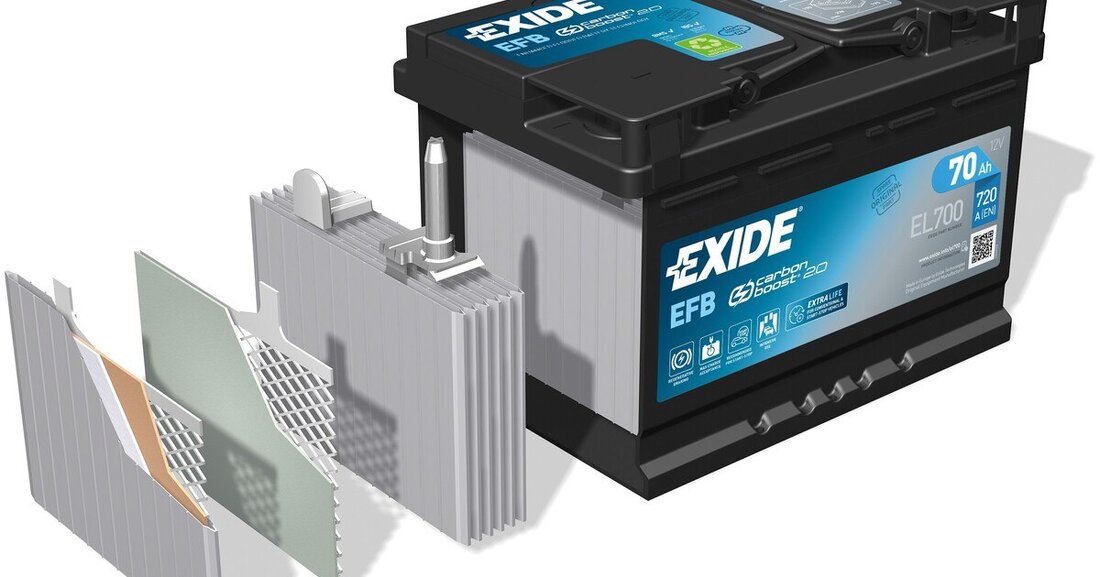What is the difference between AGM and EFB car batteries?
Since the introduction of automatic start-stop systems in modern cars, two types of car batteries have become particularly popular: AGM batteries and EFB batteries. We explain what the difference is.

What is the difference between AGM and EFB car batteries?
With Start-stop systems In modern cars, CO2 emissions should be reduced because the engine switches off automatically when it is not needed. This requires special systems, including a battery sensor, sophisticated energy management and, of course, a start-stop battery that can withstand the special loads. Two battery types are suitable for the automatic start-stop systems: AGM and EFB batteries. These are the differences:
The AGM battery
AGM stands for "Absorbent Glass Mat", means in German: The battery acid is absorbed into a glass fleece, i.e. the acid is bound. AGM batteries are particularly cycle-resistant, battery manufacturer Banner speaks of three times the cycle stability compared to conventional starter batteries. The battery manufacturer Exide says they have four times the cycle stability compared to conventional lead-acid batteries. In addition, AGM batteries offer very high vibration resistance and are leak-proof, as this Electrolyte bound is. According to banners they come with a battery up to 360,000 engine starts possible before the car battery loses its ability to start. Both Banner and Exide recommend AGM batteries for car models with brake regeneration because this type of battery can be recharged very quickly. AGM batteries are also perfect for vehicle models with auxiliary heating or models that generally have a high electrical energy requirement. Another advantage of the AGM battery: Due to its complex internal structure, there is no loss of water. However, since the battery tends to produce a lot of gas when charging voltages are too high or at extremely hot temperatures, a safety valve is installed to safely release excess gas pressure.
The EFB battery
EFB stands for "Enhanced Flooded Battery", means: The electrolyte is not bound, but liquid. Roughly speaking, you can say that the EFB battery is a further development of the usual lead-acid battery, but is technically significantly superior to it. The vibration resistance is higher and, according to Banner, the cycle life is twice as long as that of a normal lead-acid starter battery. Exide estimates the lifespan to be three times longer, with twice the charging acceptance. Both battery manufacturers position the EFB battery slightly below that AGM battery. Banner recommends using this primarily for small and medium-sized car models where no brake recovery systems are used. You can also easily use an EFB battery in vehicles without an automatic start-stop system up to 270,000 engine starts.
Important NOTE
Banner strongly advises against installing a normal wet battery in vehicles with an automatic start-stop system if an AGM or EFB battery was installed as standard. A conventional wet battery will not be able to withstand the increased demands caused by the start-stop function.
Lithium-ion starter batteries are also becoming increasingly widespread in the motorcycle sector. Here we explain the advantages and disadvantages the technology has and whether we will soon see more of it in the passenger car segment.

 Suche
Suche
 Mein Konto
Mein Konto